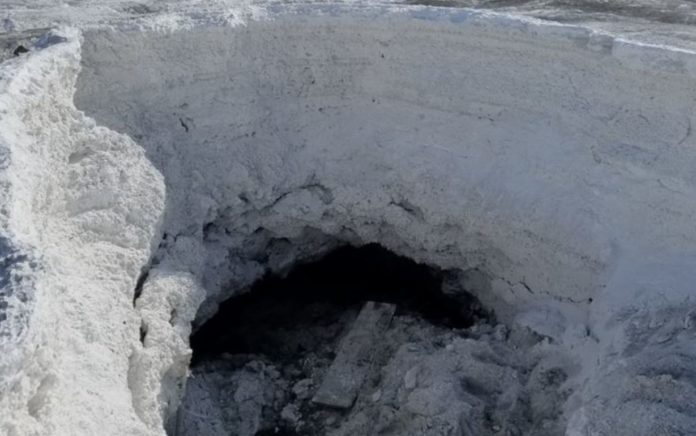Lost Hammer Spring, located in Nunavut in Canada’s High Arctic, is one of the coldest and most salty terrestrial springs identified to date.
The water that rises through 600 meters of permafrost to the surface is very salty (~24% salinity), perpetually cold (~ — 5 °C), and contains nearly no oxygen (1ppm dissolved oxygen).
Because of the high salt concentrations, the Lost Hammer spring does not freeze, allowing it to remain a liquid water habitat even under sub-zero conditions.
These conditions are similar to those found on Mars, where extensive salt deposits and possibly frigid salt springs have been discovered. While previous research has shown signs of bacteria in a Mars-like environment, this is one of the few studies to find microbes that are alive and active.
A McGill University research team led by Lyle Whyte of the Department of Natural Resource Sciences used state-of-the-art genomic tools and single-cell microbiology methods to identify and characterize a novel, and more importantly, the active microbial community in this unique spring to gain insight into the kinds of life forms that could exist on Mars. It wasn’t easy to find the microbes and then sequence their DNA and mRNA.
Elisse Magnuson, a PhD student in Whyte’s lab and the paper’s first author, says, “it took a couple of years of working with the sediment before we were able to successfully detect active microbial communities.”
“The saltiness of the environment interferes with both the extraction and the sequencing of the microbes,” the author adds, “so when we were able to find evidence of active microbial communities, it was a very satisfying experience.”
The scientists isolated and sequenced DNA from the spring community, which allowed them to rebuild the genomes of around 110 microbes, the vast majority of which were previously unknown.
These genomes have helped the scientists figure out how these species live and thrive in this severe environment, and they’ve also served as blueprints for future life forms in similar situations.
The researchers were able to detect active genes in the genomes and, as a result, find some highly uncommon microorganisms actively metabolizing in the harsh spring environment using mRNA sequencing.
“The microbes we found and described at Lost Hammer Spring,” explains the author, “are surprising, because, unlike other microorganisms, they don’t depend on organic material or oxygen to live.
“Instead, they survive by eating and breathing simple inorganic compounds such as methane, sulfides, sulfate, carbon monoxide and carbon dioxide, all of which are found on Mars.
“They can also fix carbon dioxide and nitrogen gasses from the atmosphere, all of which makes them highly adapted to both surviving and thriving in very extreme environments on Earth and beyond.”
The researchers’ next steps will be to grow and define the most abundant and active members of this unique microbial ecosystem in order to better understand why and how they are thriving in the very cold, salty muck of the Lost Hammer Spring.
The researchers anticipate that this may aid in the understanding of the intriguing but perplexing sulfur and carbon isotopes found lately by the NASA Curiosity Rover in Mars’ Gale Crater.
Image Credit: Elisse Magnuson
You were reading: New Microbes Identified On Earth Could Survive On Mars
